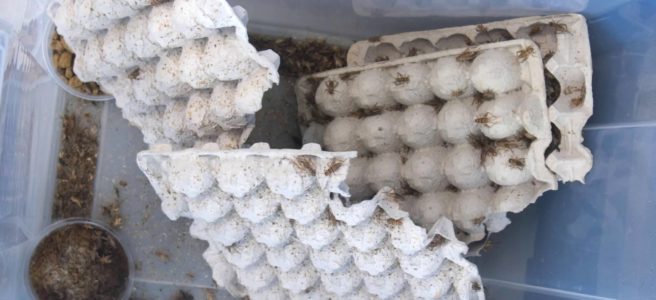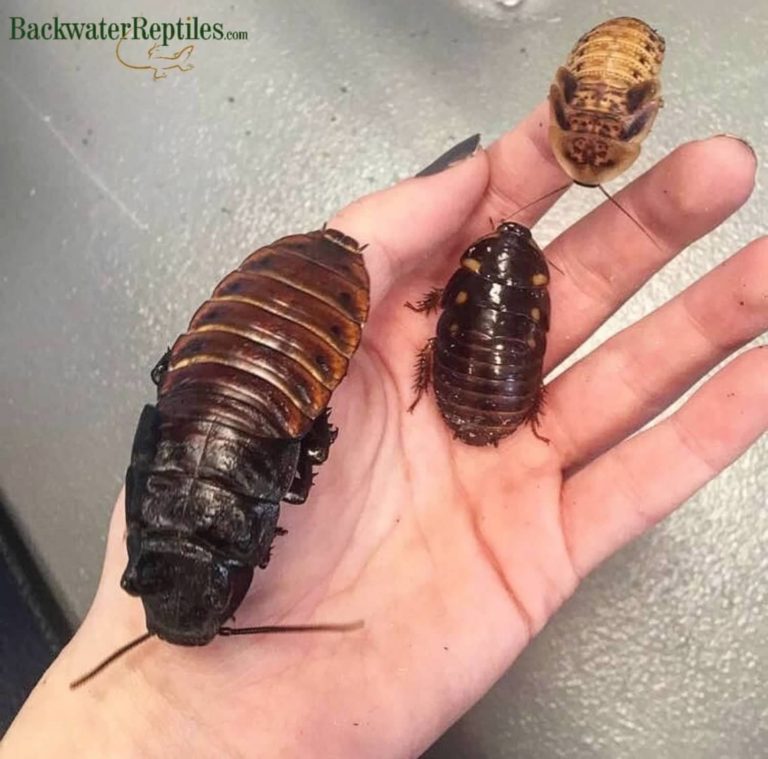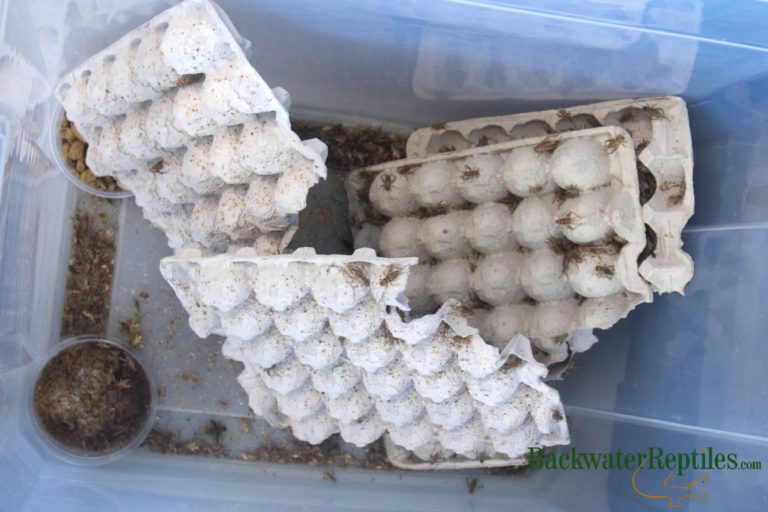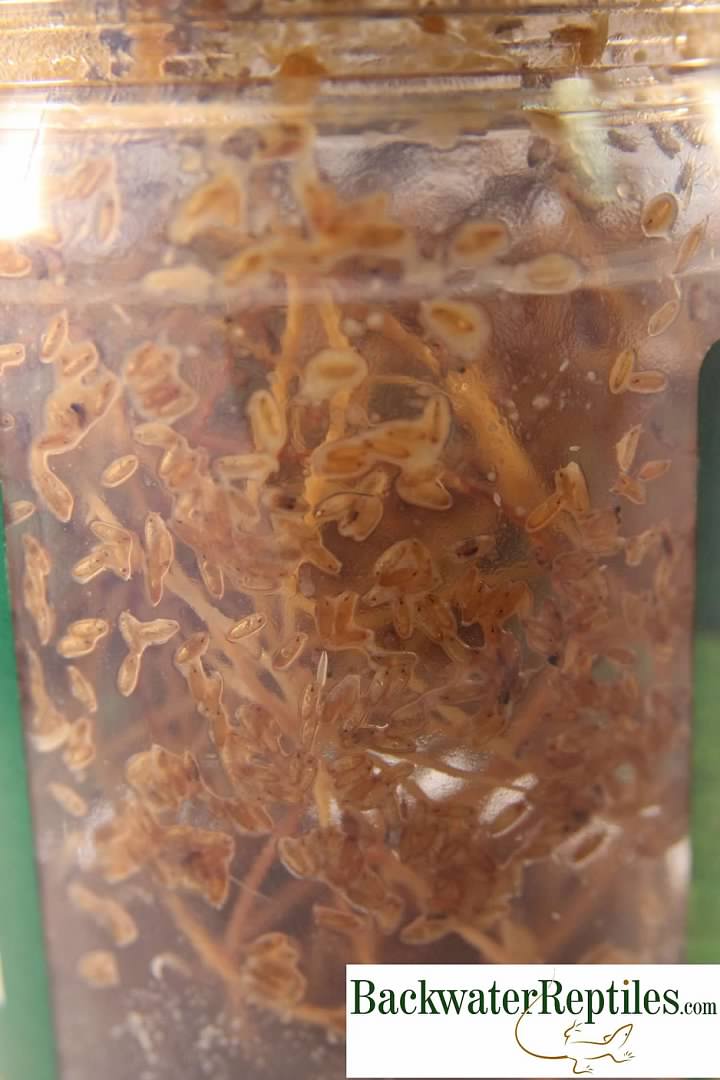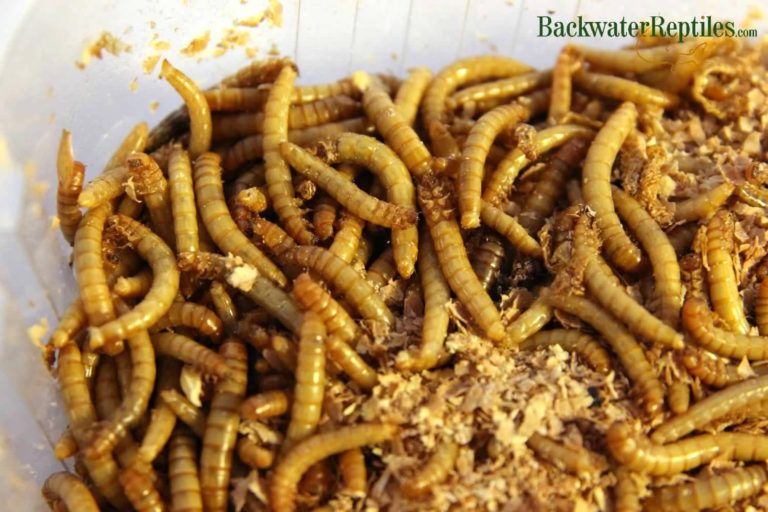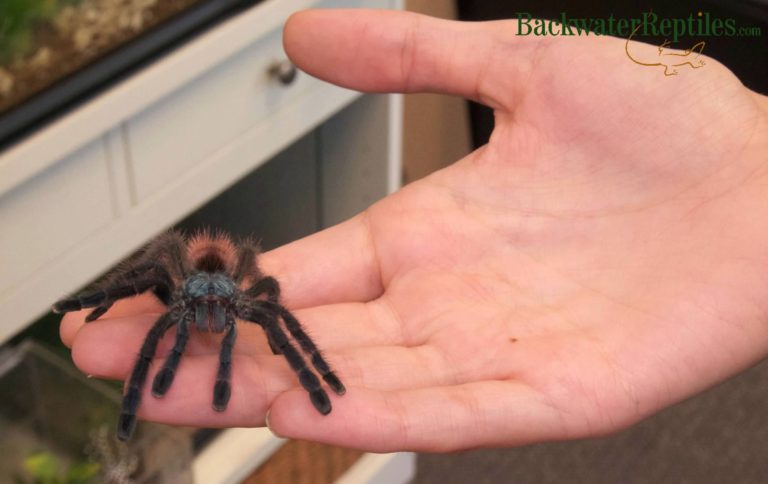What are the best feeder insects for reptiles? What is the best type of reptile food? What should I feed my pet reptile?
Although reptiles will eat different insects based upon their size, age and species, carnivorous and insectivorous reptiles will generally do best when fed a varied diet of insects. At Backwater Reptiles, we think the best feeder insects are: crickets, roaches, hornworms and fruit flies.
Crickets as Feeder Insects
Crickets are the most common feeder insect and can be purchased at virtually every pet store. All carnivorous reptiles will eat crickets including turtles, smaller monitor lizards, leopard geckos and skinks.
Crickets make great reptile food because they are available in so many sizes. This means that they come in pinhead sizes and can be fed to smaller reptiles and amphibians like baby geckos and salamanders. Larger crickets are also easy to find and make good food for growing monitor lizards and voracious pacman frogs.

Once you have a batch of feeder crickets purchased and have taken them home, you likely won’t need the entire batch right away. Unless you have quite an extensive collection of herps or are a specialty breeder, you’ll need to keep the crickets for a few days as your pet consumes them. The good news is that they are easy to keep in a bucket or terrarium. All you need to do is provide a water-rich veggie for them to eat and drink from, such as a potato, and a place to hide.
If you want to learn more about the ins and outs of crickets as feeder insects, check out our blog article titled “Are Crickets Good Feeder Insects?”
Need to order crickets? Click here and you will find Backwater Reptiles sells crickets as feeder insects that come in a wide range of sizes…and they ship free!
Roaches as Feeder Insects
Roaches might sound like a strange reptile food, but truthfully, they are quite nutritious and reptiles love them. There are many species of roaches that could be fed to reptiles and amphibians, but we recommend Dubia roaches as the best choice.
Like crickets, Dubia roaches are available in a wide range of sizes which means that reptiles in all stages of life can eat them. They are great reptile food for chameleons, leopard geckos and many species of frog too.

Some owners might be a bit surprised to find out that dubia roaches are a bit costlier than crickets or other more common feeder insects, but roaches are more nutritionally dense too. So although they might cost a little more, they are high in protein, low in fat and have a reasonable water content. They are actually quite a good value!
If you want to read an in depth article about why we recommend Dubia roaches as feeder insects, check out our blog article on the subject.
Backwater Reptiles sells feeder Dubia roaches here if you’re ready to order some for your pet reptile.
Hornworms as Feeder Insects
Hornworms, AKA Tobacco Hornworms or Goliath worms, are a species of caterpillar that transform into the Carolina Sphinx Moth. They are green with black stripes and a red spike on their rear end, which is where they got their common name.
Hornworms are one of the less common feeder insects on the market, but they still make excellent reptile and amphibian food.
Hornworms will plump up and grow into big juicy treats for your pet. They contain a lot of water, so they are excellent snacks to help your pet stay hydrated. At Backwater Reptiles, we use them as supplements to our chameleons’ diets. The chameleons enjoy eating the juicy caterpillars and it also helps them stay hydrated, which is something that needs to be monitored closely in order for your chameleons to stay healthy.

Nutritionally, we do still advise feeding your reptile other more nutritionally dense insects such as crickets, mealworms or roaches. Hornworms are delicious to reptiles, but they are mostly water and therefore are not the best choice for a staple reptile food.
If you want to learn more about why hornworms are good feeder insects, check out our blog article on the subject. You can also order hornworms for your pet here on our website.
Fruit Flies as Feeder Insects
Due to their small size, fruit flies are not the most common feeder insect. The most common pet reptiles such as skinks, leopard geckos and monitor lizards are all too big, even as babies, to ever eat fruit flies. However, there are a ton of small herps such as pygmy chameleons, baby chameleons and dart frogs that still need to eat and fruit flies are a fantastic option.
There are two types of fruit flies that are used as reptile food – Drosophila melanogaster and Drosophila hydei. Both are about the same size and have the same nutritional benefits, but if you want to compare and contrast the two species, check out our blog article that delves into detail on that topic.

Fruit flies are interesting feeder insects because when you order them, they are shipped in little vials containing complete ecosystems. The vials will have everything the flies need to thrive and even reproduce.
If you have a small exotic pet that needs very tiny food, you can order fruit flies from our website.
Conclusion
The type of feeder insect you give to your pet reptile might not be the same as what another herp owner feeds theirs. It’s good to vary the type of food your reptile eats because different insects contain different nutrients that your pet requires.
We recommend crickets and roaches as the best options for staple diet insects and other feeder insects make great treats and supplements. Don’t forget about the importance of gut-loading and dusting your feeder insects with vitamins and your reptile will thrive.
If you need any assistance ordering feeder insects or are wondering how to place an order for feeder insects, check out our blog article on the subject.

